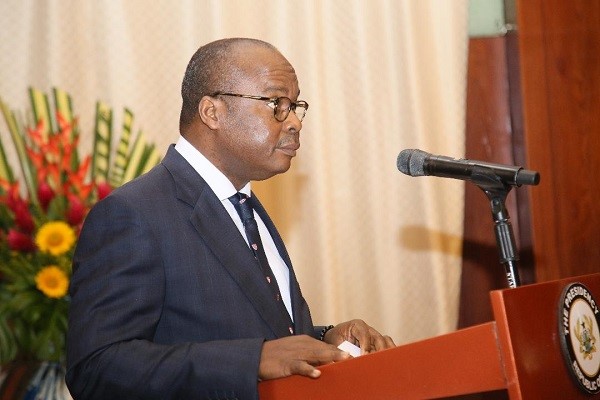The adjustment of the weight of assets in portfolios of commercial banks has seen credit to the private sector approach pre-pandemic levels, rising by 33.7 percent at the end of June, against 6.8 percent during the comparable period of 2021, the Bank of Ghana (BoG) disclosed.
In value terms, the total new advances for the period under consideration was GH¢24.6billion, a 54 percent increase year-on-year (YoY) over the GH¢15.9billion – 1 percent growth – recorded for the same period of 2021.
The new advances were extended by 20 out of the 23 commercial banks despite rising concerns over headwinds from gloomy macroeconomic developments, Governor of the Bank, Dr. Ernest Addison, stated during a press conference at the conclusion of the 107th meeting of the Monetary Policy Committee (MPC).
“The latest credit conditions survey of banks revealed tightened credit stance on loans to enterprises and households. Notwithstanding these tight credit conditions across the industry, banks’ credit extension improved during the review period,” he explained.
Despite the industry’s non-performing loans ratio also improving by 2.9 percentage points to close the period at 14.1 percent compared with 17.0 percent in June 2021, there are rising concerns about credit sustainability from lenders and borrowers alike.
Customer confidence, however, appears to be waning in no small part due to the rising cost of input including credit as the average lending rates of banks jumped to 24.27 percent in June, from 20.04 percent in December 2021.
This was primarily a result of the domino effect of the BoG’s consistent hike of its benchmark policy rate by 5.5 percent since the end of last year. This has driven the Interbank Weighted Average Rate (IWAR) to 19.92 percent in June 2022 from 12.68 percent at the end of last year, the Governor indicated.
Industry resilience
In spite of prevailing tightening economic conditions, the banking industry has maintained the resilience it first demonstrated at the height of the pandemic with growth in key metrics. In the period under review, total assets of the industry hit GH¢200billion, representing a 22.8 percent annual growth. Conversely, the value of deposits grew to GH¢131.3billion at 19.1 percent, lower than the 22.5 recorded in 2021.
The banking industry saw its pre-tax profit rise to GH¢4.4billion, a 21.6 percent YoY growth, remaining lower than the 32.1 percent growth from the corresponding year while operating expenses also rose to 22.9 percent from 7.3 percent. “Net interest income grew at 12.4 percent, compared with 19.4 percent a year ago. Net fees and commissions, however, grew by 29.2 percent, compared to 19.6 percent in the previous year, reflecting a rebound in trade finance-related business,” Dr. Addison stated.
The Capital Adequacy Ratio (CAR) across the industry was 19.4 percent, above the regulatory minimum of 13.0 percent. Similarly, the ratio of core liquid assets to short-term liabilities improved to 30.2 percent versus 27.5 percent the year before. Consequently, operating income across the board rose to 23 percent.










